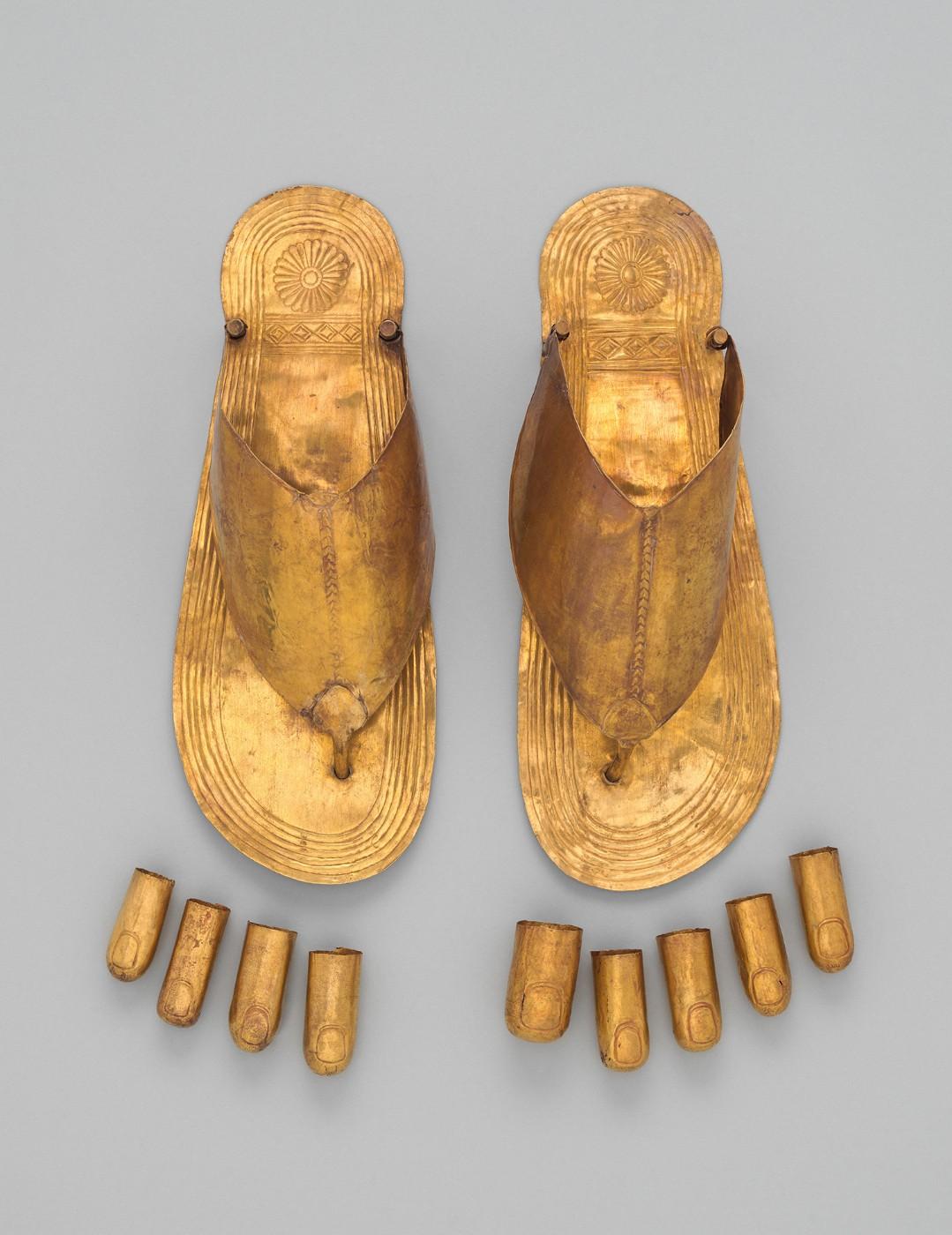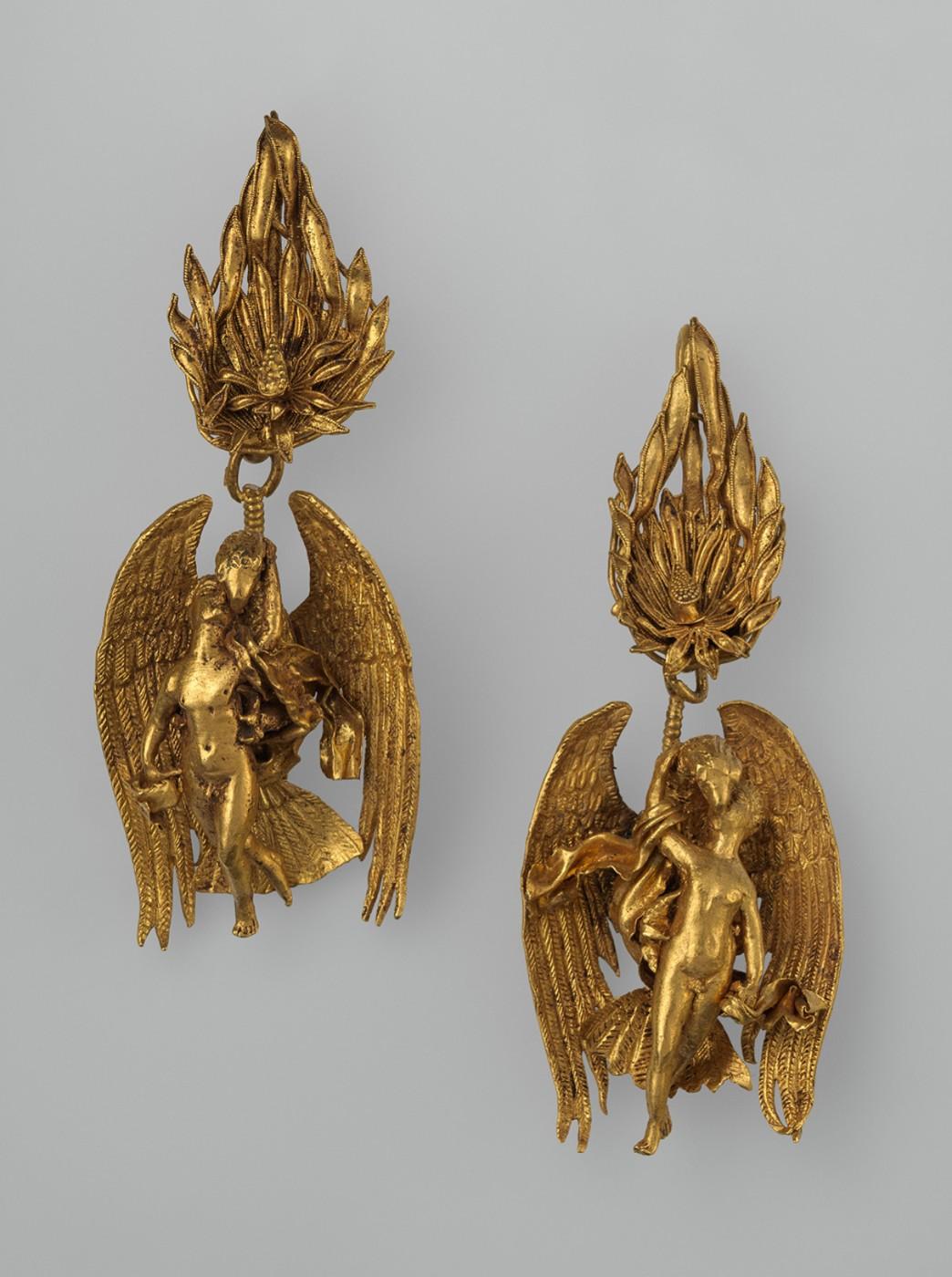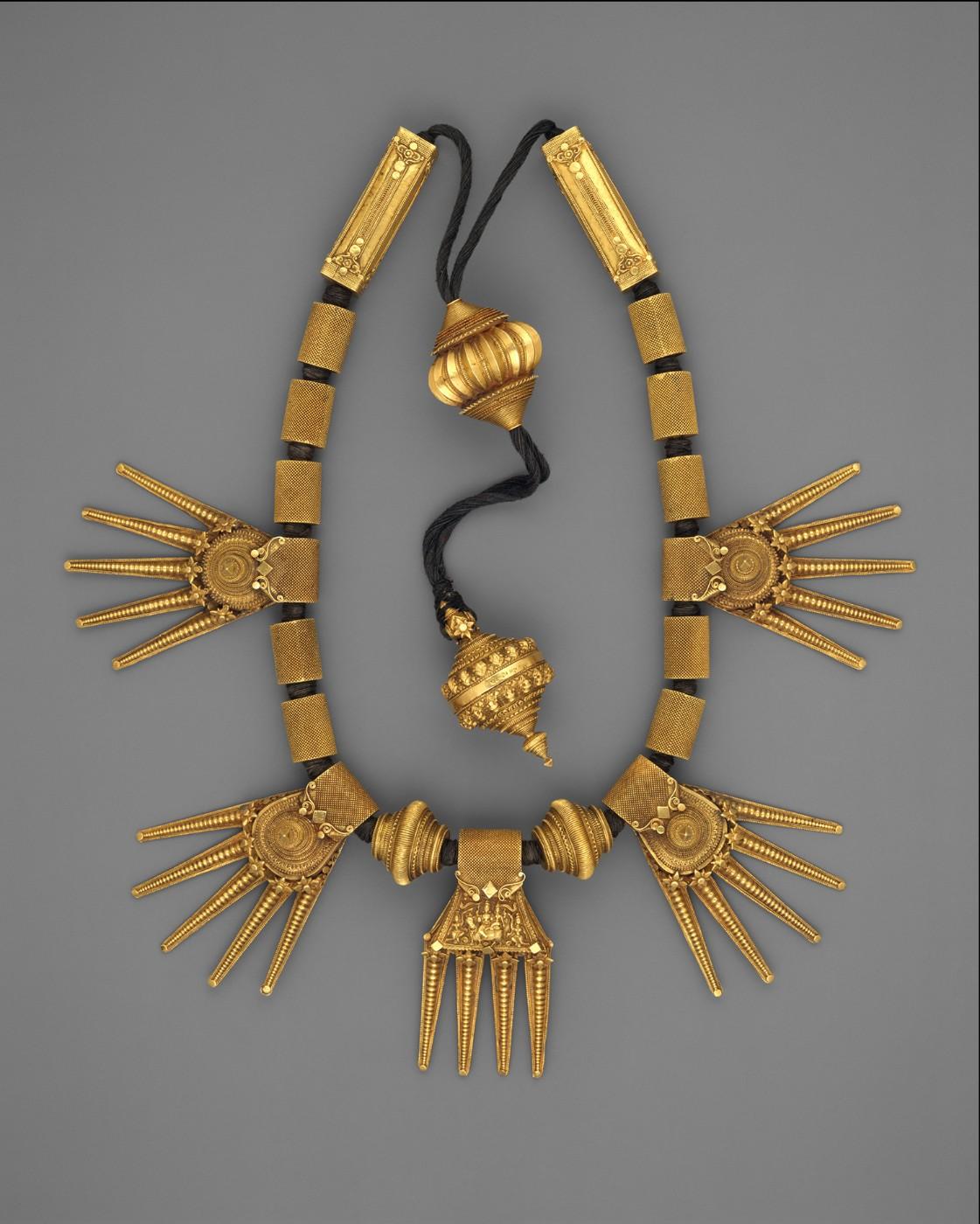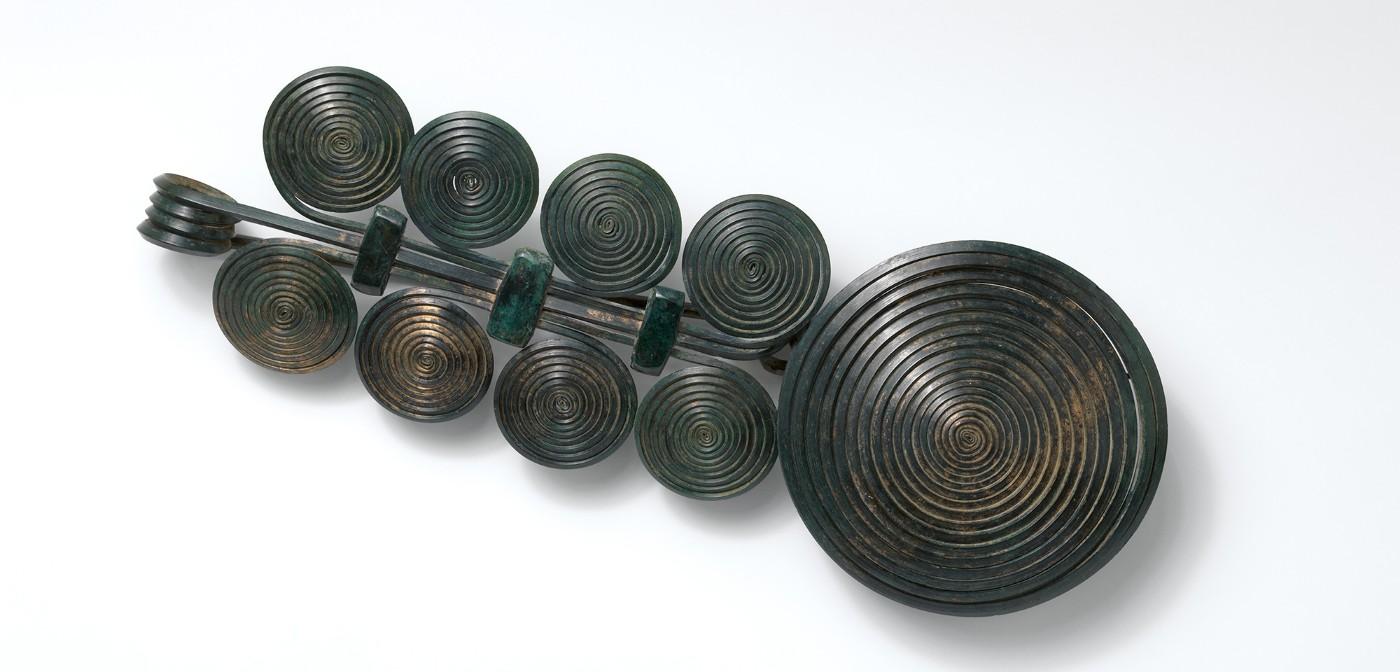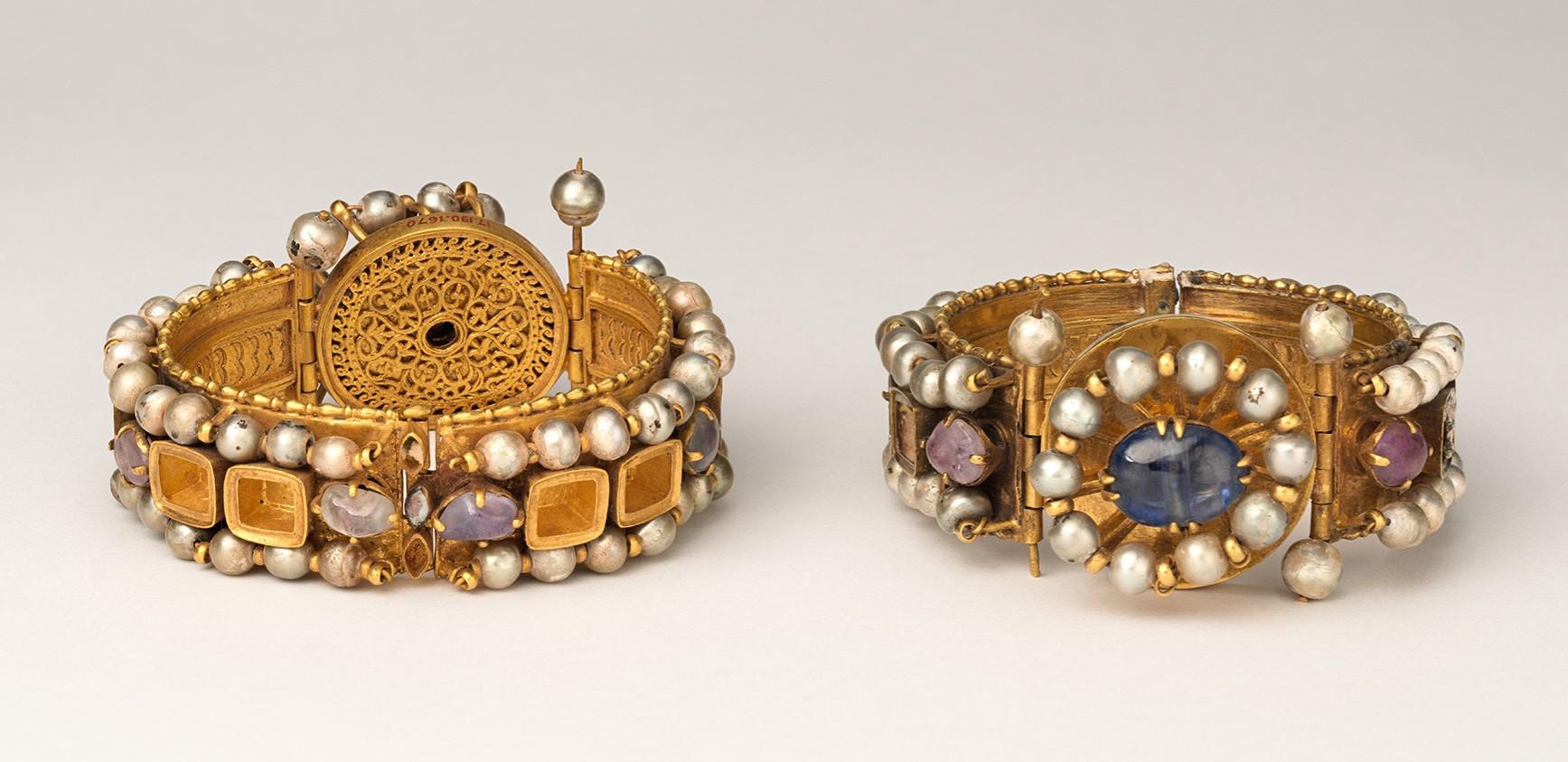This concept extends to the afterlife, in the form of funerary jewelry, including a pair of gold sandals and toe ‘stalls’ from the reign of Thutmose III, circa 1479-1425 BC. We would be much poorer in our knowledge of ancient Egypt were it not for the dedication of the keepers of royal paraphernalia in making sure that the most precious adornments were entombed with the pharaohs and kings. In addition to such historically important associations, the exhibit puts rather heavy emphasis on the role of gods in various cultures.
Other themes are less clearly defined, or useful: there is an arbitrary line between objects that express the “divine” body as opposed to the “transcendent” body, “the “alluring” body and the “resplendent” body. These divisions create a sense of whiplash effect for the viewer who is yanked back and forth between periods and regions.





